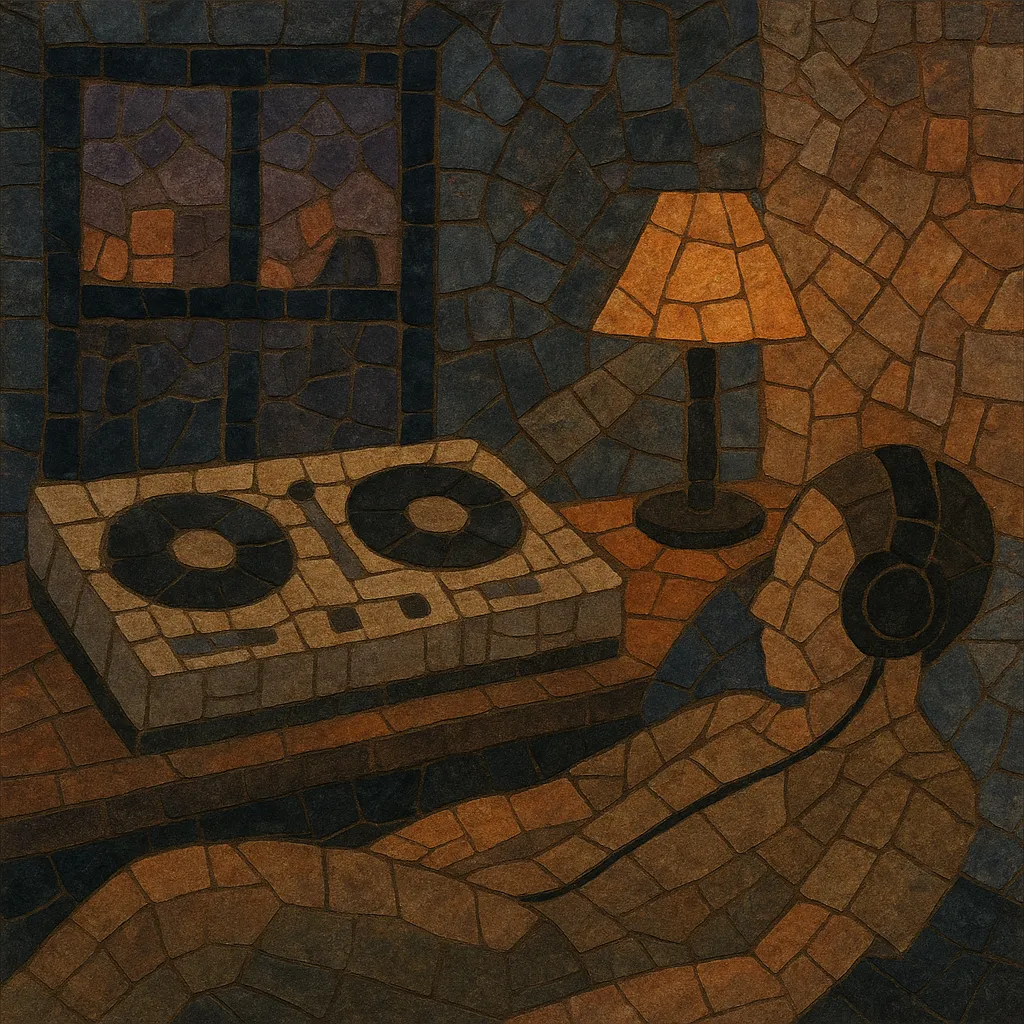
Lo-fi house is a strain of house music that embraces imperfections—tape hiss, vinyl crackle, overdriven drums, and slightly detuned synths—to evoke warmth and nostalgia. It retains a classic 4/4 house pulse but softens the edges with hazy pads, subdued vocals, and wistful melodies.
Emerging as an internet-driven micro–scene, the style often uses inexpensive or deliberately degraded production chains (cassette saturation, bit reduction, SP-404–style resampling) to achieve its character. The result is dance music that feels intimate and bedroom-made, equally suited to small dancefloors and solitary late-night listening.
Lo-fi house coalesced in the mid-2010s as a DIY response to increasingly clean, high-fidelity dance music. Drawing from classic Chicago house’s rough immediacy, deep house’s soulful chords, outsider house’s gritty textures, and vaporwave/chillwave’s nostalgic patina, producers began favoring degraded sound sources and inexpensive gear to recapture warmth and personality.
The genre surged via YouTube and Bandcamp, where algorithmic recommendations and community channels amplified a handful of underground releases. Tracks such as DJ Boring’s “Winona,” DJ Seinfeld’s “U,” Ross From Friends’ “Talk To Me You’ll Understand,” and early Mall Grab EPs became scene-defining. Labels like Lobster Theremin, Shall Not Fade, E-Beamz, 1080p, Steel City Dance Discs, and Unknown To The Unknown were pivotal hubs.
Lo-fi house foregrounded tape hiss, saturated kicks, dusty breaks, and melancholic pads, often sampling 1990s R&B, film dialogue, or forgotten media. While some critics dismissed it as a fleeting internet trend, supporters saw it as a humanizing correction to over-polished dance music, emphasizing mood, memory, and intimacy over club maximalism.
As artists matured, many folded influences from ambient, indie electronic, and contemporary pop while keeping the tactile production DNA. The genre’s ethos—DIY workflows, purposeful imperfection, and emotive sampling—bled into wider house scenes and online beat communities, leaving a durable imprint on indie electronic and bedroom-oriented dance music.

